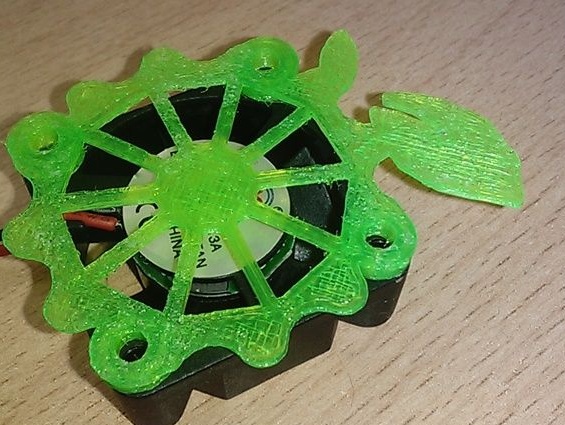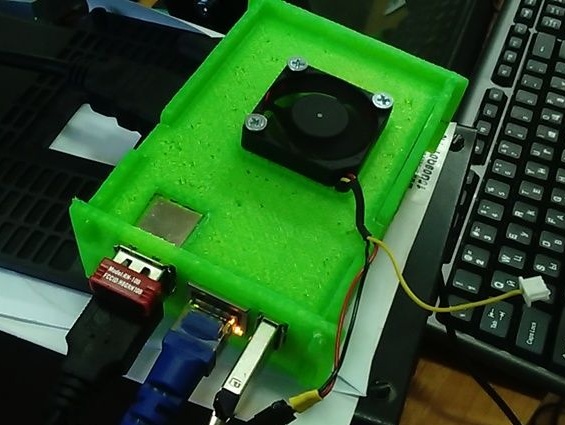
Theme Corps for Chinese electronic devices really relevant. For Orange Pi PC () (and other models of motherboards from this manufacturer), it is not expensive to purchase cases immediately in the same online store. But for me, the standard case is not suitable. Under Linux, the processor heats up coolly without blowing.
So I added a powerful radiator. Naturally, he did not climb into the standard case. Then I drew and printed the 3D printer cases to my taste.
All cases are prefabricated, each face of the cube is printed separately. It needs to be finalized with a file, so it is better to use soft plastics such as ABS.
My advice to those who are going to print the case data - print the wall in which the power button is located, from transparent or light plastic, then the power diode glows beautifully when the device is working.
At first I just took model The standard case for the Orange Pi PC from Thingiverse. I made a hole in it to install a 30x30mm 5 volt fan powered by USB.

However, this case had 2 significant drawbacks: it is difficult to insert / remove a memory card and there is no on / off button
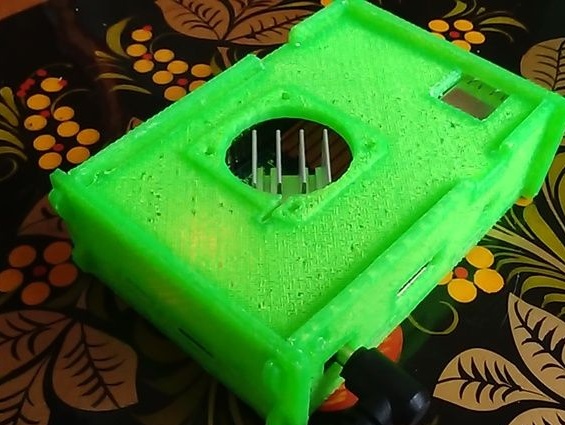
Based on the identified inconveniences, I slightly modified this case, increased it in size so that the radiator fits more. Well, he got confused, gave him the texture of a zebra.
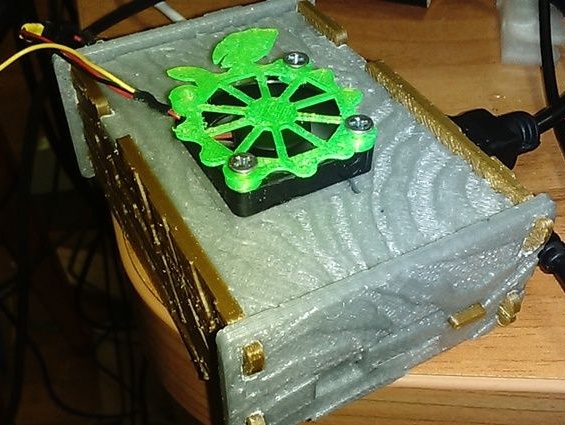
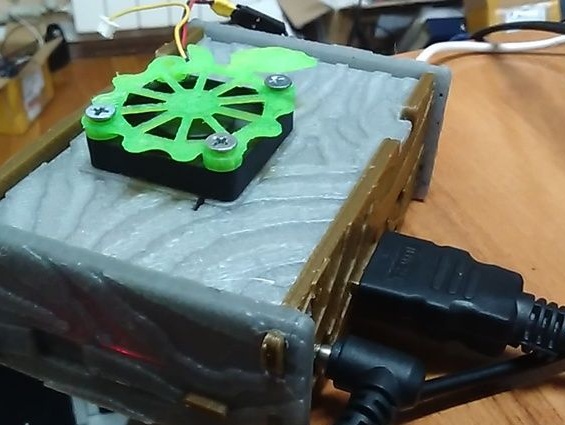
At that time, I came to the conclusion that I was unlikely to actively use the connector for a 40 pin cable, I put it on my side and made a plug that is not difficult to cut.
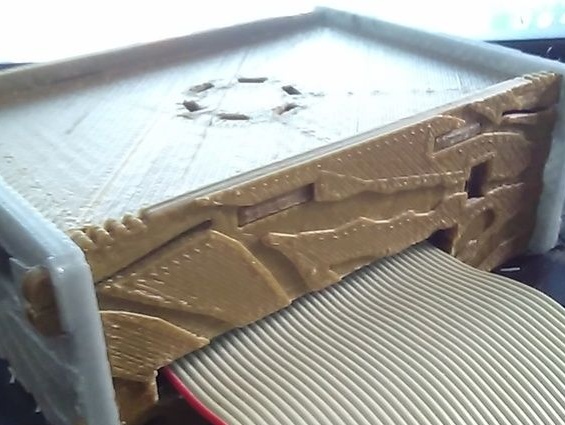
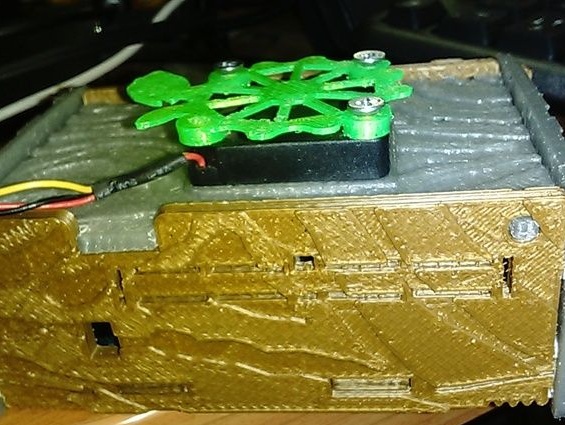
Since I powered the fan from USB, and the length of the wire was not long, I was not happy with how the cover of the case opens. So I decided to fix it. In addition, a larger radiator required more space. Well, logic with ergonomics suggested that there was no place for a fan on the lid. So I came to the final version of the body. In it, an orange works to this day.
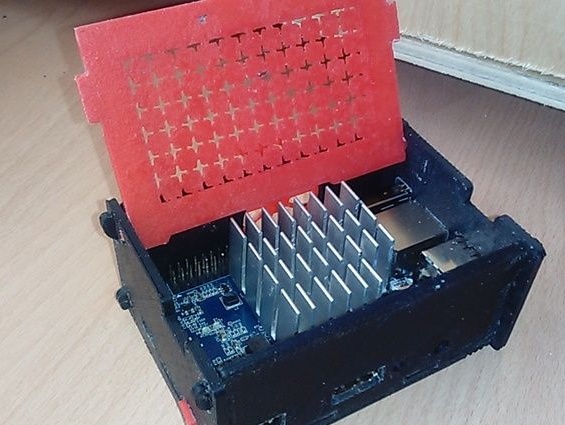
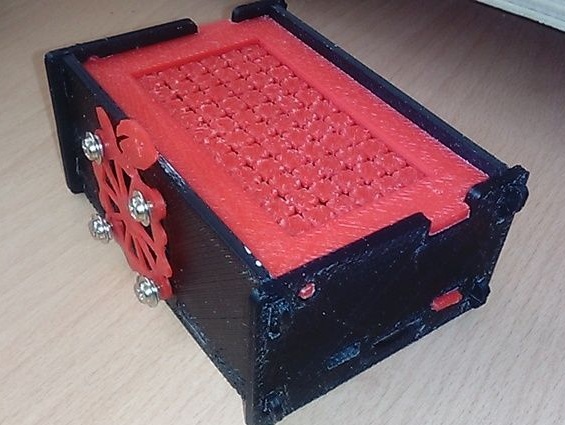
Nevertheless, the idea that I would take some kind of arduino, such as the Pro Mini, would attach a mosfet to it to control the speed of airflow depending on temperature. Therefore, the cover was made so that additional boards could be screwed to it.Well, for ventilation, this option is quite suitable. True, I suffered with drawing, and the print speed of such a structure is much higher. But it looks super.
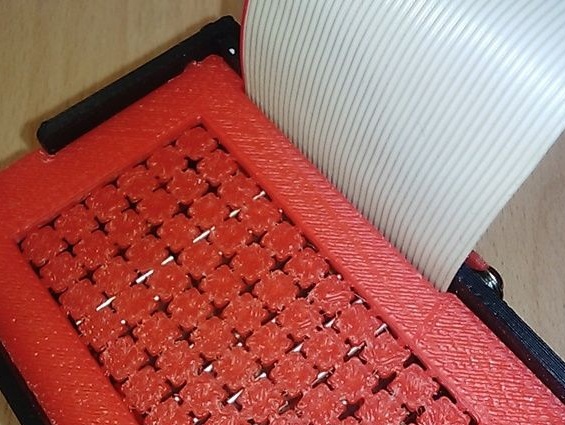
As you can see, in the latest version of the case with a large radiator, I refused the cooling fan. In part, this also happened because the orange began to work under Android as a game console for children. And this OS does not overheat the processor like Linux. By the way, I stopped at one of the versions of Android Zidoo1.
In general, without a fan, the hole for it had to be latched. I made a protection / plug for the fan in the form of the logo of an orange.
